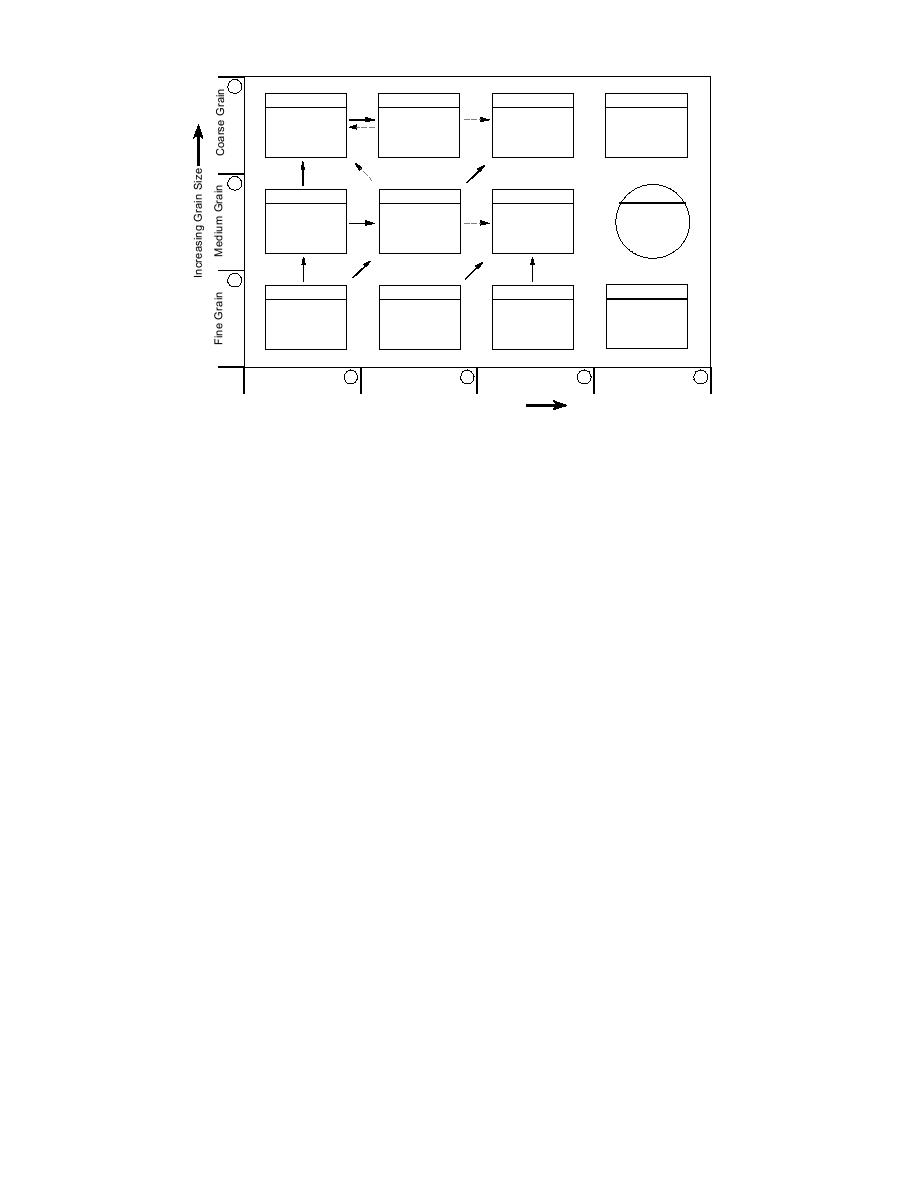
3
3at
3bt
3ct
3dt
Coarse-grained
Coarse-grained
Depth Hoar
Sun Crust
old snow,
old snow,
medium hard
hard
2
d
2at
2bt
2ct
Medium-grained
Medium-grained
Ice Horizon
Powder Snow
old snow,
old snow,
soft
hard
1
1dt
1at
1bt
1ct
New snow,
Wind slab,
Wind slab,
Wind Crust
loose
soft
hard
a
c
Medium Hard b
d
Loose
Hard
Very Hard
Increasing Bonding Strength
Figure 3. Classification of snow from Bader et al. (1939)
the number of classes in a classification such as
mation mechanisms for specific materials vary
we suggest might not be excessive.
with test conditions (as an example, Wilkinson
[1988] includes a recent deformation map for pure
Testing and test data
ice). Information needed to evaluate the quality
We anticipate that initially the experiments to
of testing includes details about the test appara-
demonstrate the range of deformational behavior
tus, the sample, test procedure, measurement
of the various snow classes will be unconfined
methods and errors, and data analysis methods.
and confined uniaxial compression at various
A preliminary discussion of the information that
loading rates. The confined compression tests
should accompany an experiment to measure
would provide useful information on compaction
mechanical properties is given in Smith et al. (1982).
of different types of snow, and the data from the
unconfined tests (including the compressive
strength) could be used for comparison with ear-
RECOMMENDATIONS
lier work, and for determination of the param-
AND CONCLUSIONS
eters of some of the linear stress-strain relation-
ships.
We believe that the most important step that
Regardless of which parameters are selected
can be taken to encourage the expanded use of
as discriminators in the classification, there will
snow mechanics in applied problems is to de-
be gradients rather than sharp boundaries be-
velop a readily accessible source of data on the
tween snow classes. In addition, it is likely that
response of snow to applied loads. This would
stressstraintimestrength data for some classes
provide the information to allow engineers to treat
will overlap under some conditions, indicating
problems using available numerical data in the
that the deformational behavior of those types of
absence of reliable constitutive relationships and
snow are similar for those cases. This might re-
would make information available to assist in the
duce the number of classes needed to sort snow
development of constitutive relationships. We rec-
types according to deformational behavior, al-
ognize that developing such a comprehensive data
though it would still be necessary to establish the
set is a daunting task, but we do not think the
range of conditions over which the overlap oc-
situation will improve unless such an effort is
curs. The effort required to do this might ul-
made. The approach that we recommend involves
timately be equivalent to constructing a "defor-
the following steps:
mation map" for each snow class. These would be
1. Develop methods to measure index proper-
similar to the maps used to show how the defor-
ties that are sensitive to variables of the snow
13



 Previous Page
Previous Page
